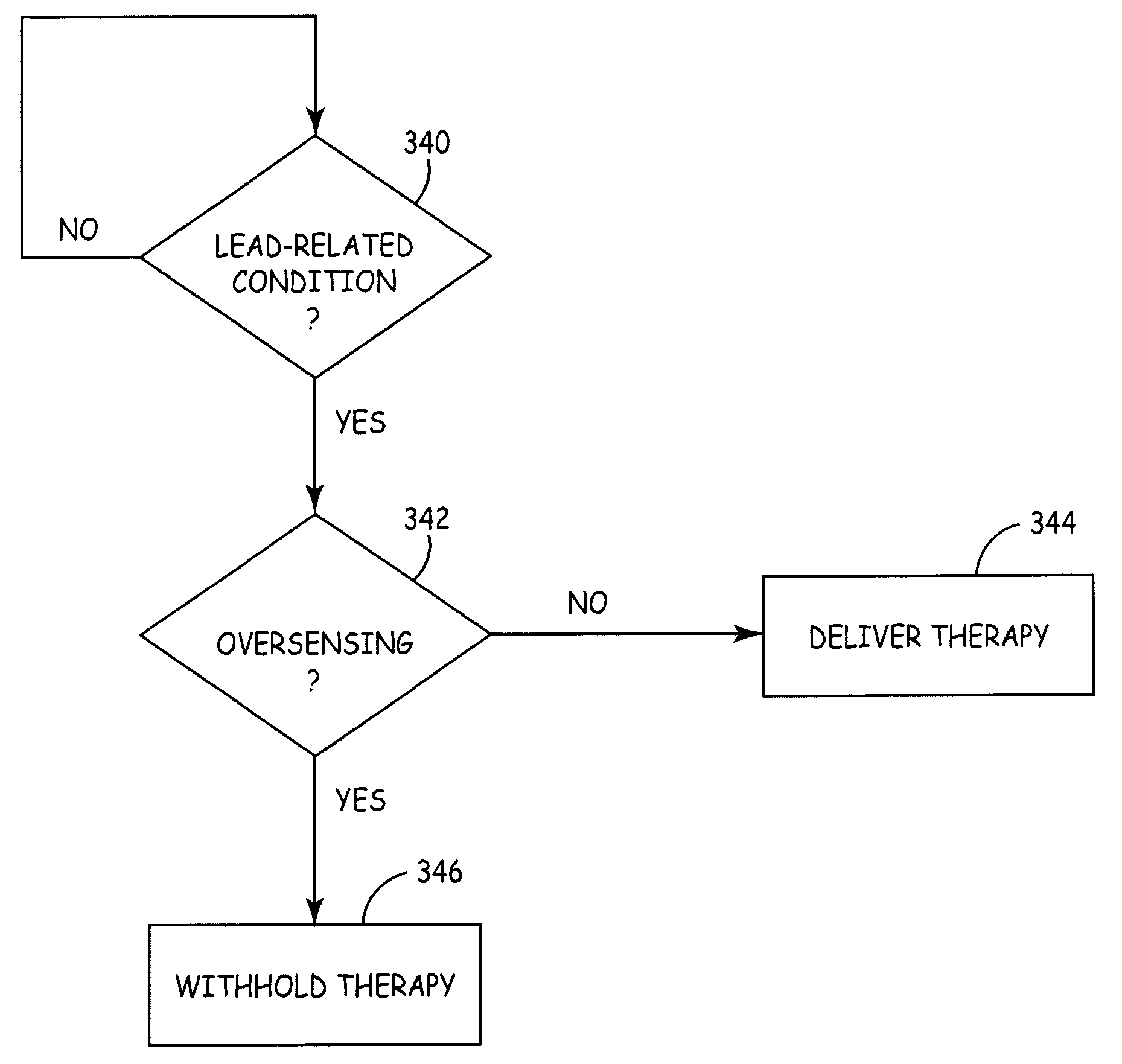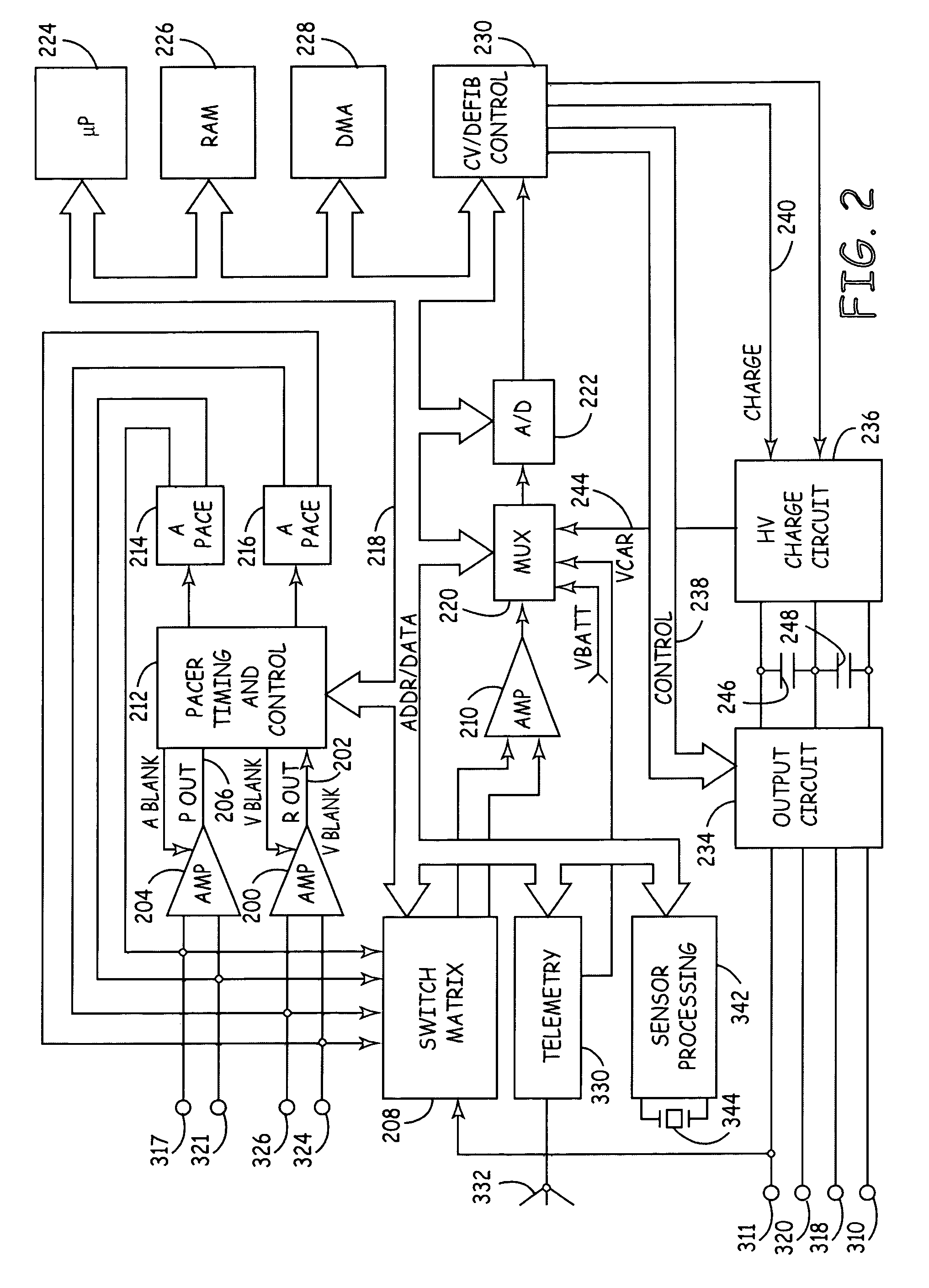Method and apparatus for identifying lead-related conditions using prediction and detection criteria
a technology of lead-related conditions and prediction and detection criteria, applied in the field of automatic identification of lead-related conditions, can solve the problems of lead insulation and integrity problems that may become more prevalent, stress on the lead body, and small damage to the lead body
- Summary
- Abstract
- Description
- Claims
- Application Information
AI Technical Summary
Benefits of technology
Problems solved by technology
Method used
Image
Examples
Embodiment Construction
[0033]FIG. 1 is a schematic diagram of a pacemaker / cardioverter / defibrillator and lead set of a type in which the present invention may usefully be practiced. The ventricular lead includes an elongated insulative lead body 16, carrying three mutually insulated conductors. Located adjacent the distal end of the lead are a ring electrode 24, an extendable helix electrode 26, mounted retractably within an insulative electrode head 28, and an elongated coil electrode 20. Each of the electrodes is coupled to one of the conductors within the lead body 16. Electrodes 24 and 26 are employed for cardiac pacing and for sensing ventricular depolarizations. At the proximal end of the lead is a bifurcated connector 14, which carries three electrical connectors, each coupled to one of the coiled conductors.
[0034]The atrial / SVC lead includes an elongated insulative lead body 15, also carrying three mutually insulated conductors. Located adjacent the J-shaped distal end of the lead are a ring elect...
PUM
 Login to View More
Login to View More Abstract
Description
Claims
Application Information
 Login to View More
Login to View More - R&D
- Intellectual Property
- Life Sciences
- Materials
- Tech Scout
- Unparalleled Data Quality
- Higher Quality Content
- 60% Fewer Hallucinations
Browse by: Latest US Patents, China's latest patents, Technical Efficacy Thesaurus, Application Domain, Technology Topic, Popular Technical Reports.
© 2025 PatSnap. All rights reserved.Legal|Privacy policy|Modern Slavery Act Transparency Statement|Sitemap|About US| Contact US: help@patsnap.com



